Google just made their newest AI product – NotebookLM, an AI Note Taking app, available to everyone (18 years or older) in the US after a controlled, slow rollout with waitlist access for the past few months. Still in the experimental stage, it'll start to use Gemini Pro now, Google's most capable AI model yet.
What exactly is NotebookLM?
It is a note-taking app that's powered by an LLM (Large Language Model) at its core. You can use it to read, write, and analyze your notes. The app is more than just a note-taking tool, though; it functions as a virtual research assistant. Its goal? To utilize language models with your existing content to help you gain faster insights.
With NotebookLM, you can import any documents and ask questions about the content. A distinctive feature of NotebookLM that sets it apart from other AI chatbots is its ability to "ground" the language model in only your personal notes and sources, effectively creating a customized AI tailored to your information.
You can use it to summarize facts, explain complex ideas, or make new connections, all from the sources that you want to use.
Features and Capabilities
NotebookLM currently allows you to upload Google Docs, and PDFs and paste copied text as sources to ground the LLM.
You can use your uploaded documents in one of the following ways:
- Get a Summary: When you add a source, the AI tool automatically generates a summary, key topics, and questions you can ask to enhance your understanding of the material.
- Ask Questions: Once you've uploaded the source material, you can ask specific questions about it. This feature is useful for a deeper understanding of the content.
Here are a few examples to get an idea of how you can fit it into your workflow: A medical student, for instance, can create a glossary of terms related to dopamine when they upload scientific papers on neuroscience.
Another example involves an author writing a historical novel summarizing all interactions in a biography that is part of the research material between two key characters. - Generate Ideas: NotebookLM isn't just good for getting summaries and Q&As for your sources. It can also assist in creative idea generation. For example, if you're a content creator, you can upload your ideas in NotebookLM and ask the AI to generate content, like a video script or a blog post, related to those ideas for you.
An important aspect of NotebookLM is its ability to reduce the risk of AI "hallucinations" by grounding in the source material. It also includes citations in its answers, showing relevant quotes from the source material that it extracted its answers from to build trust. But that doesn't mean that it still cannot hallucinate, though.
You can create different Notebooks in NotebookLM for different projects. Your notebooks are totally separate from each other, and the AI cannot access information from multiple notebooks at the same time.
You can also save any interesting exchanges with NotebookLM or quotes/ excerpts from your source materials as notes. When you save an exchange with NotebookLM as a note, it is saved with citations.
You can also expect some features soon. Highlighting passages in the source while reading them, for example, will allow you to add them to a note directly, or ask the AI to create a summary. You'll also be able to select other options, such as 'Help me understand' to get a simple explanation of complex ideas, or 'Suggest related ideas' to get connections (other ideas or concepts in the source similar to the selected passage).
You'll also be able to ground the AI only in your notes, so the responses are based only on them. You'll also be able to create new notes from your existing notes, or ask the AI to create a new format for the note.
NotebookLM's Limitations
It only supports a limited type of formats as of yet. Other file types, such as images, videos, audio, or complex charts or tables, are not supported. Make sure that you have the rights to any documents you are uploading, and refrain from uploading copyrighted materials.
You can upload any static Google Docs that you have access to. NotebookLM makes copies of Google Docs and PDFs that you upload. So, if you make any changes to the Google Doc after uploading it, NotebookLM does not keep track of it, and you need to reupload the document to refresh it.
Moreover, PDFs with multi-column layouts or other unusual formatting may not work reliably with NotebookLM. You should review the imported PDFs in the source viewer to ensure they are easy to read.
There's a limit of 100 notebooks per user at this time. Each notebook can have a maximum of 20 sources and 1000 notes. Each source can be 200,000 words long.
But when a source is more than 5000 words long, the AI has a hard time performing certain tasks that involve the whole document. For example, it's not very good at generating summaries or comparisons between multiple sources when the word count is higher. However, it can still answer factual or topical questions from the document accurately.
You should also not use NotebookLM as a calculator. While it can report any numbers that are present directly in your document, it cannot perform calculations from numbers in the document.
How to Use NotebookLM
Using NotebookLM to upload your sources and chat with them for better insights is simple.
Getting Started with NotebookLM
- To get started with NotebookLM, go to notebooklm.google and click on the 'Try NotebookLM' button.
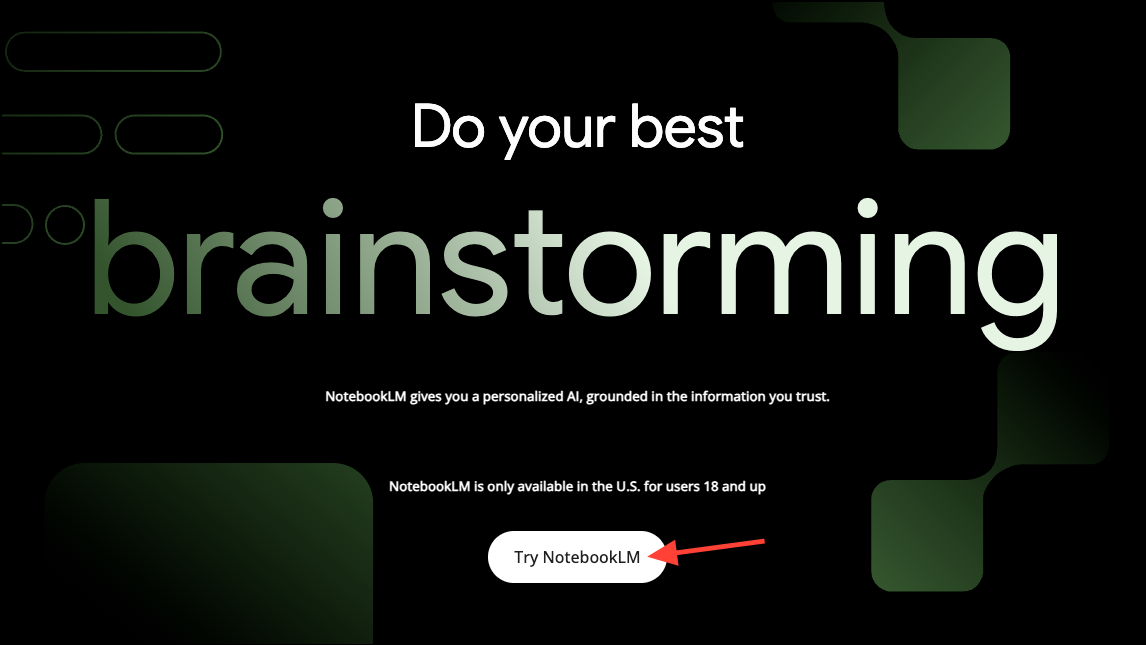
- The NotebookLM's interface will appear. You can see some of the example Notebooks from Google to learn how to use the tool. To create your own Notebook, click on the 'New Notebook' button.

- Then, enter a title for the project and click the 'Save' button to proceed.
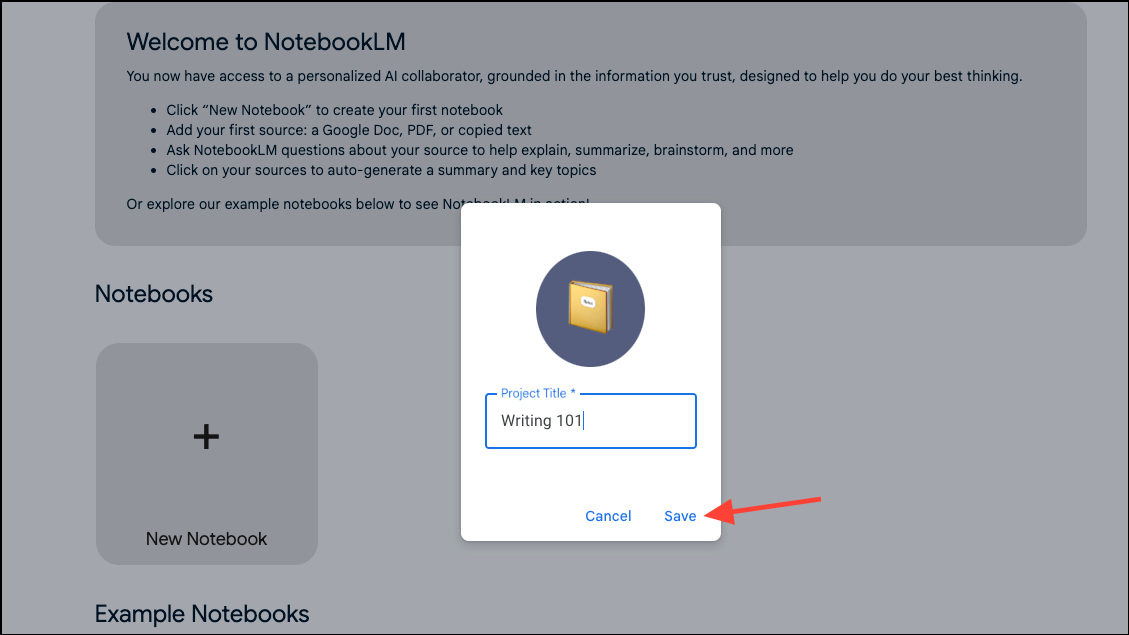
- It's time to add the sources to the notebook. Click the 'Add Source' button on the left.
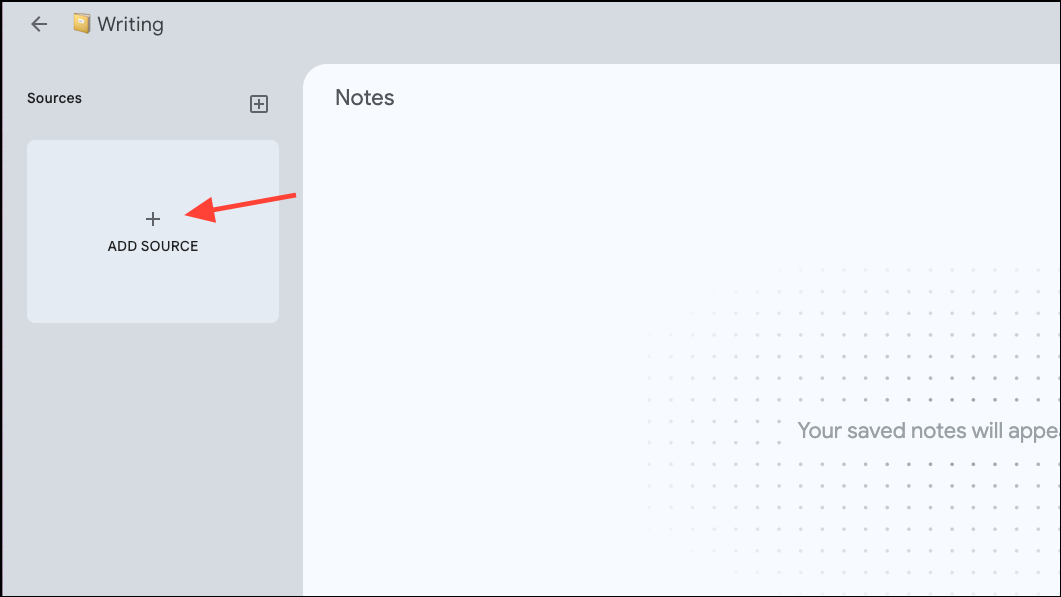
- Then, select what you want to upload. Options include Drive (Google Docs), PDF (from your computer), and copied text. Click on the desired type and upload the documents; you can also upload multiple sources in one go.

- For copied text, you can only copy-paste one source at a time. Paste your text in the textbox. Then, enter a title for the source (you cannot create a source from copied text without providing a title) and click on 'Insert'.
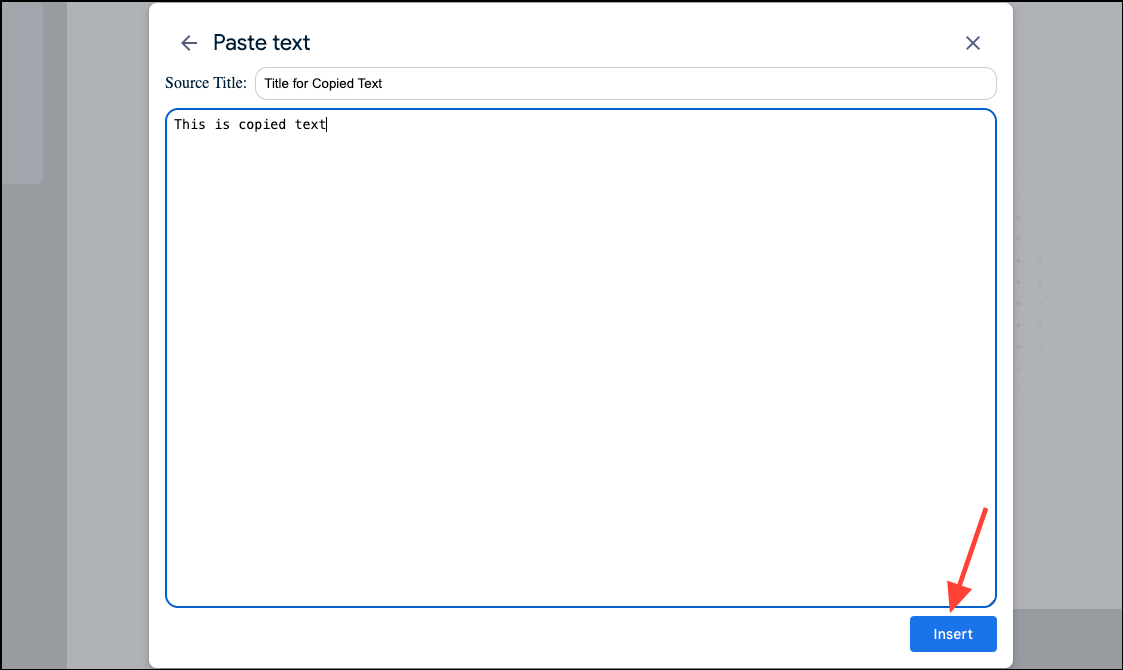
- The uploaded sources will appear in the left panel, while the chatbot interface and your saved notes are on the right.
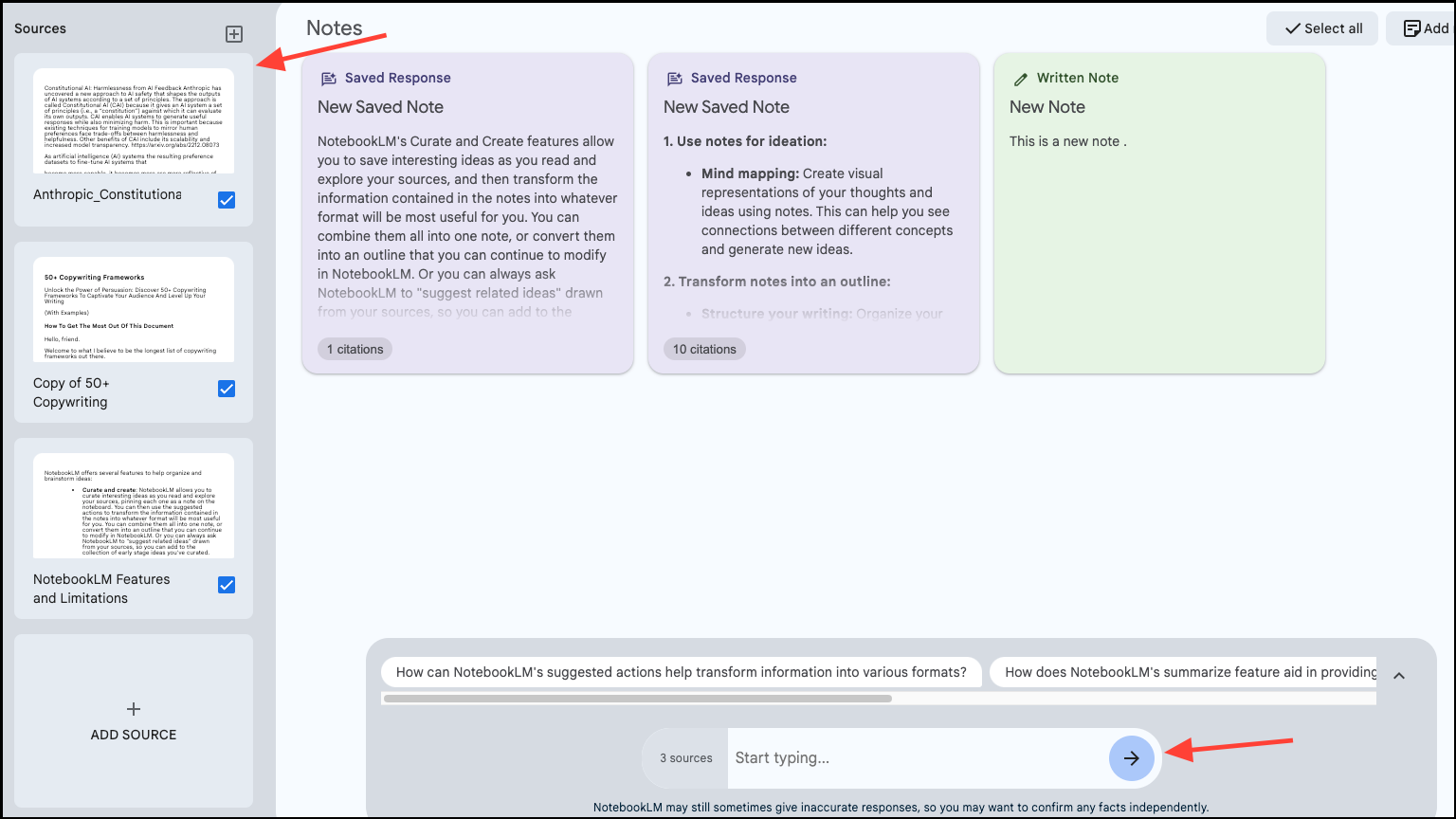
- You can also add a combination of sources instead of just a single type of source. Click on 'Add Source' from the left panel to add more sources and choose another document type to upload.
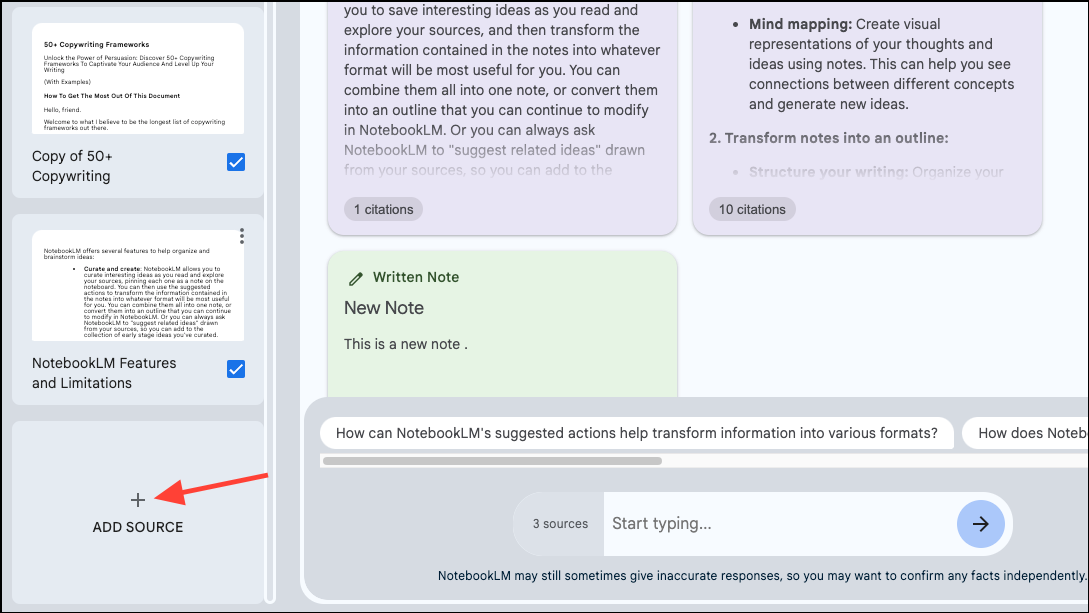
Using NotebookLM's Chatbot
You can start interacting with your sources once you've uploaded them.
- NotebookLM will show some suggested questions on the right based on your sources. You can click on a suggested question or type your own and send it to the chatbot to get answers. You can ask it for summaries, glossaries, or any other type of questions from the text.
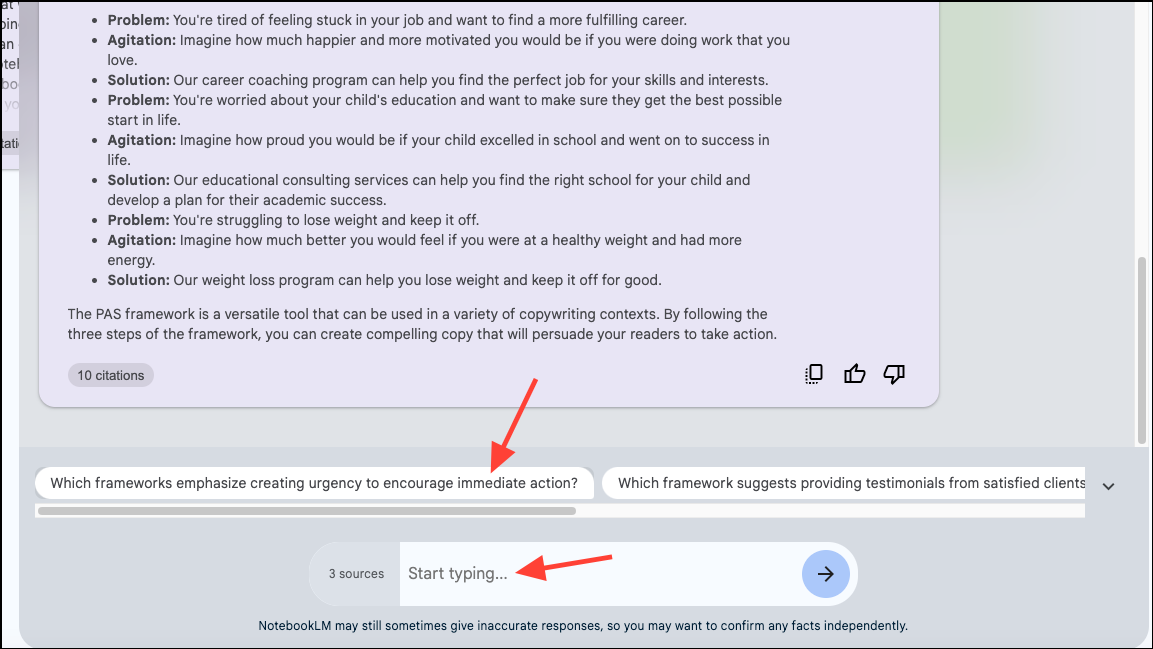
- However, answering factual questions isn't all that NotebookLM is good for. You can even ask it creative questions. For example, you can upload a short story you're writing and ask it for characters that you can add to the narrative.
- You'll get an answer from the chatbot, along with citations from the sources that it based the answer on.
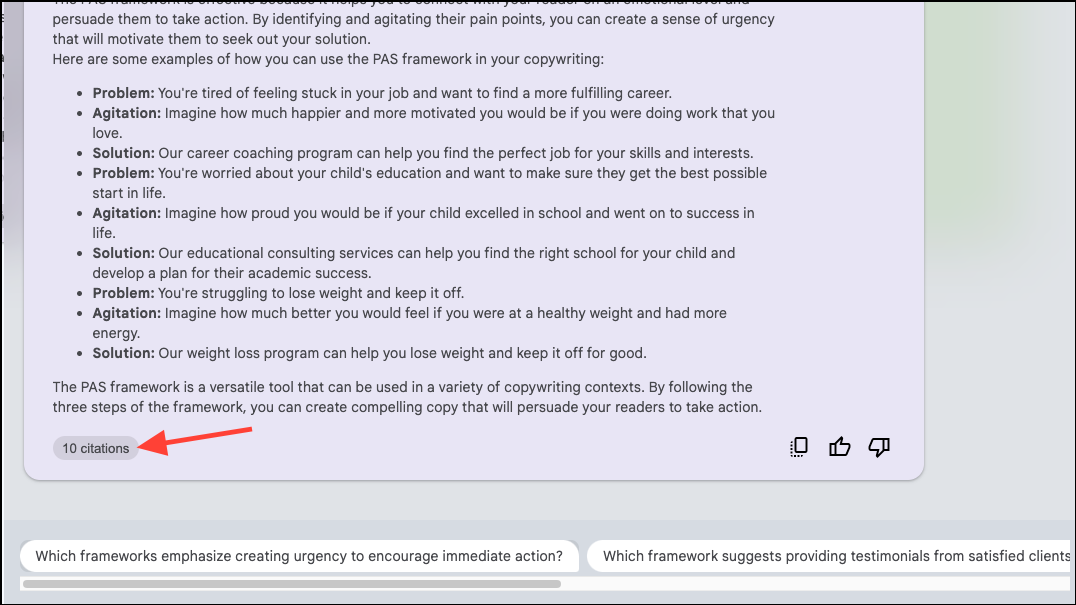
- You can click on '[N] citations' to expand them and then click on a citation number to view it in the source.
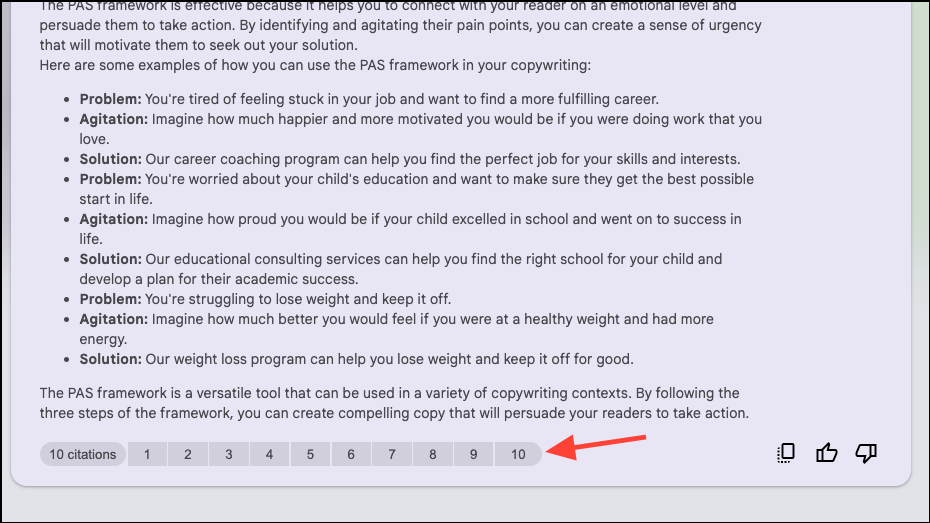
- It'll open the source on the left with the original passage from the citation highlighted.

- You can close the chat by clicking on the 'Close Chat' chevron icon.
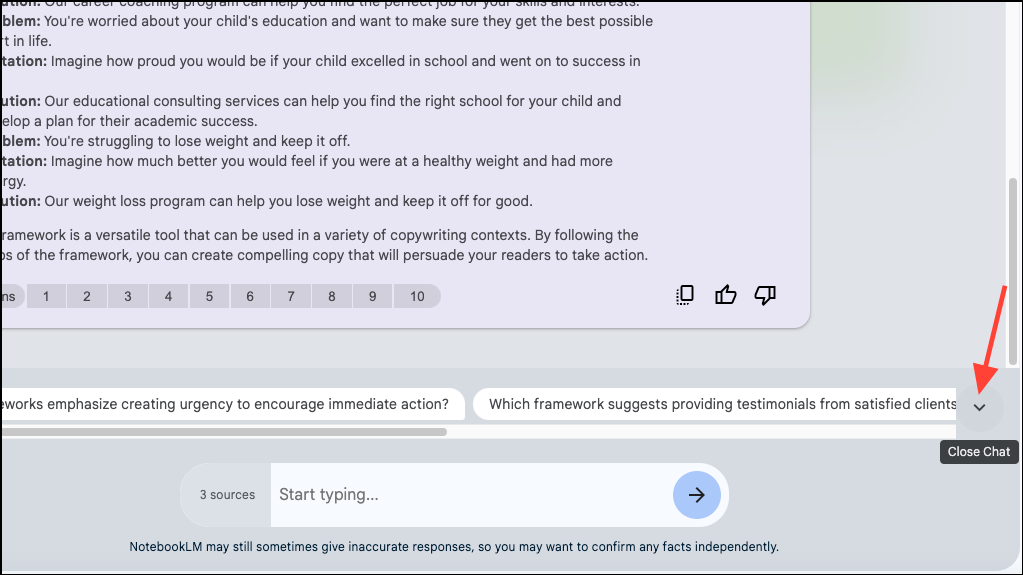
- To reopen the chat, click on the 'Open Chat' icon next to the suggested questions.
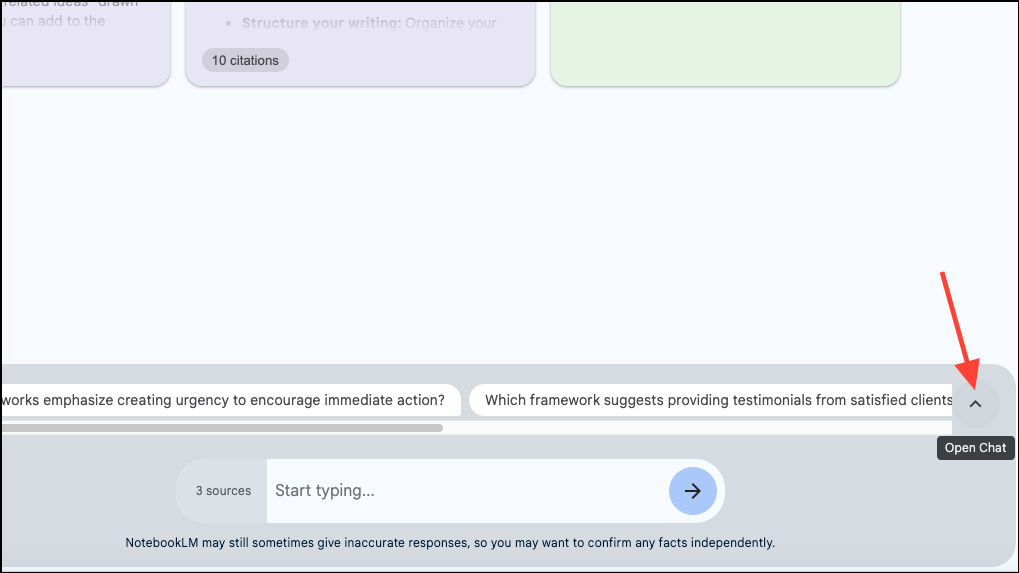
Working with Notes in NotebookLM
However, chats are only retained until you close the notebook entirely. But you can save answers as Notes to find them easily later on.
- Click on the 'Pin' icon on the answer, and it will be saved as a note.
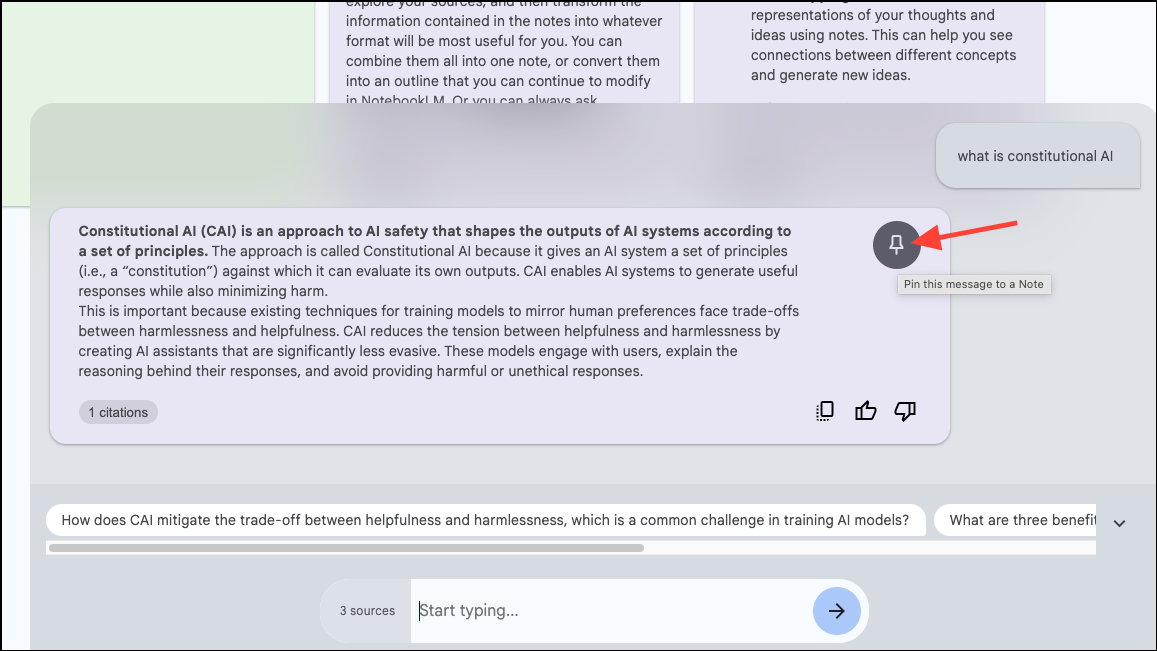
- Saved notes appear in the upper half of the right panel. Close the chat to see the notes. Notes saved from chats appear with citations.

- You can click on the note to open it and read it completely. You can also edit the title of the note. The note itself cannot be edited, though.
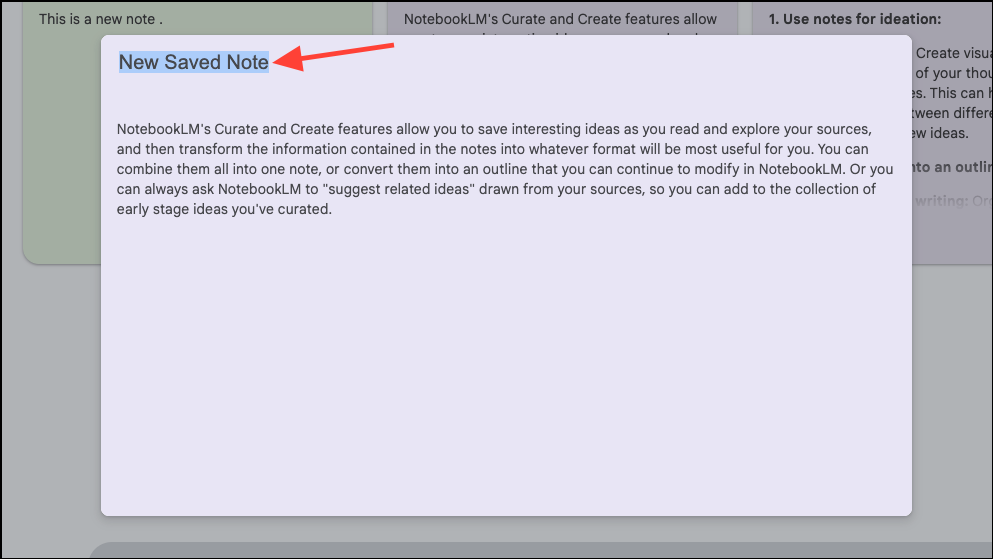
- You can also create a note yourself by clicking on the 'Add Note' option and capture any thoughts.
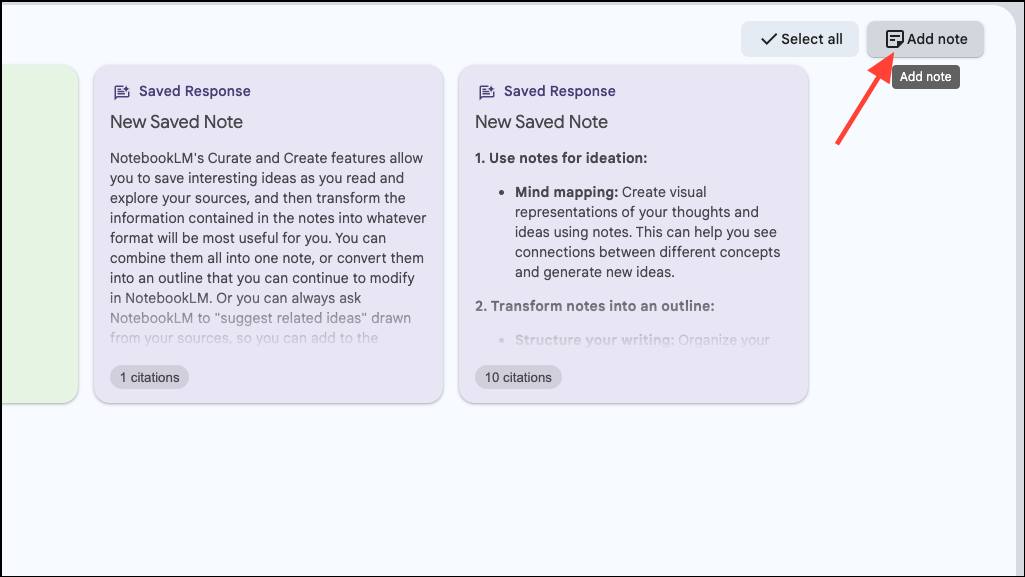
Working with Sources
Apart from citations, one of the features most users enjoy the best is the Source Guides. For every source that you upload to NotebookLM, the AI generates a summary of the document along with key topics or questions to ask that will help you understand it better.
- To view Source Guides, click on the source thumbnail from the left.
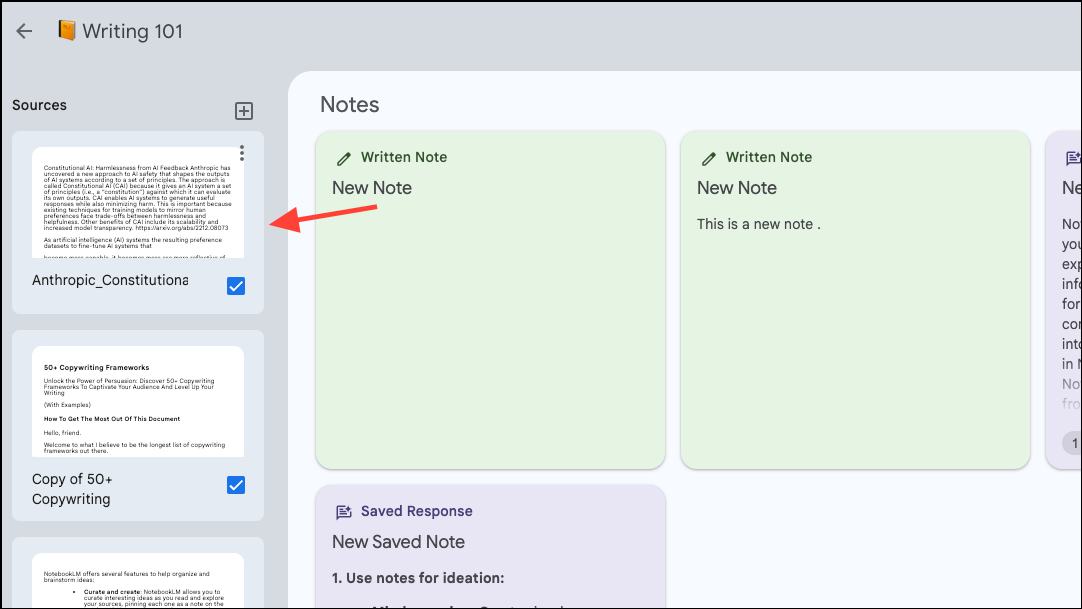
- The source document will open and the source guide will appear on the top. It might take a couple of seconds for the AI to generate it, though.
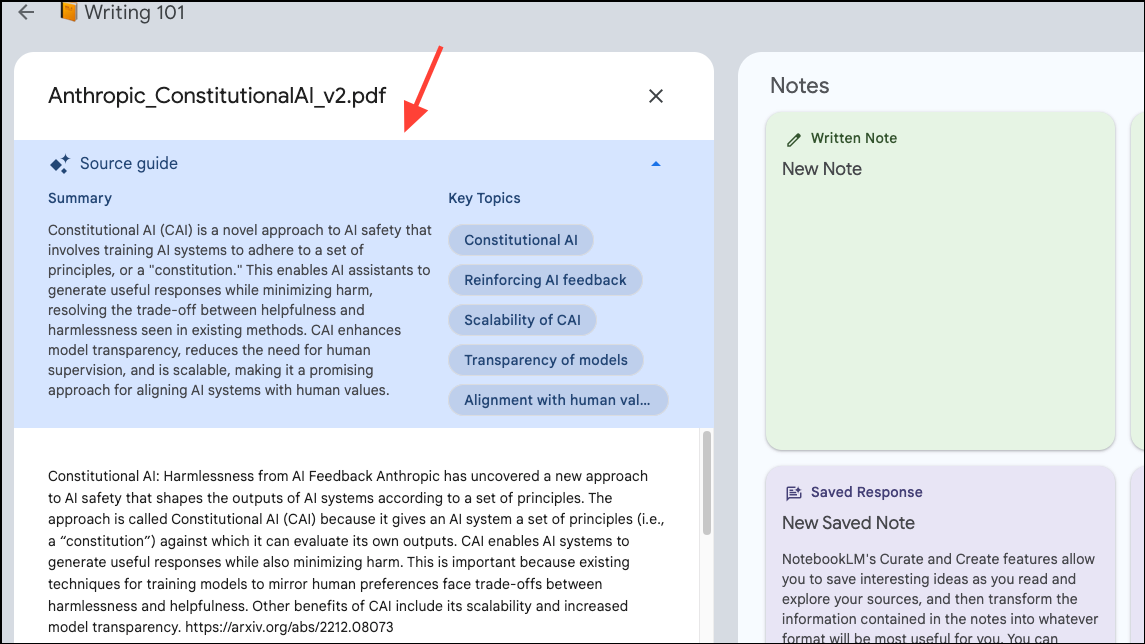
- You can also control which sources to use while interacting with the chatbot without having to delete any of them.
Go to the left panel and deselect the ones you don't want to use currently. NotebookLM will only use the selected sources for any queries that you ask.
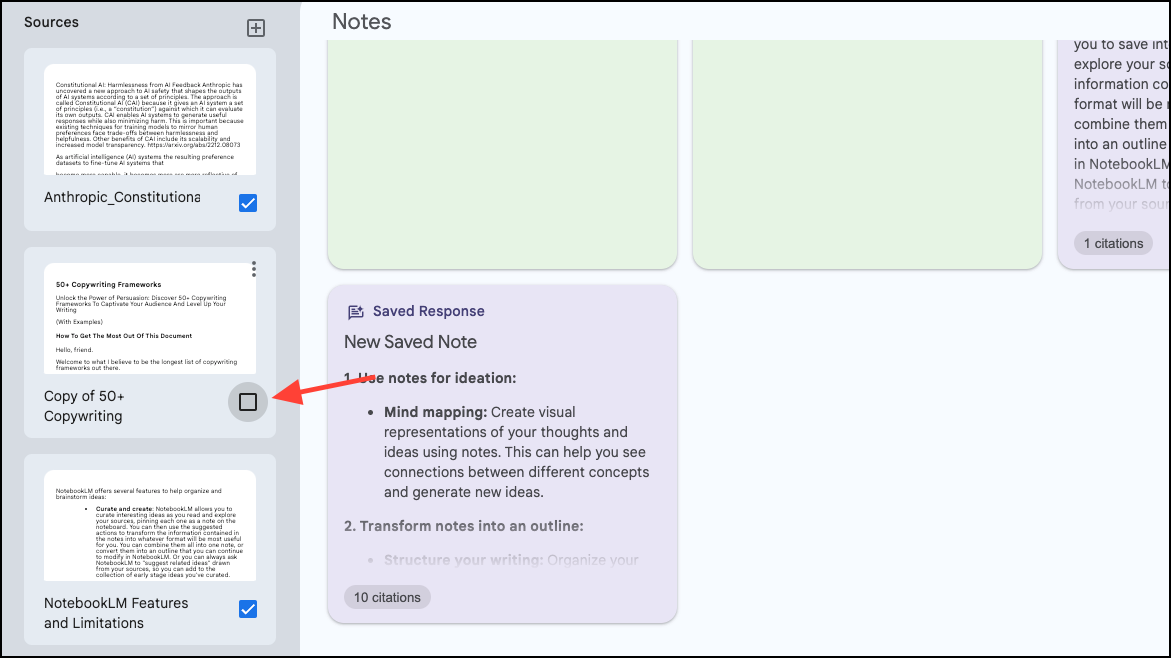
- You can see the number of sources being used at any time from the prompt bar.
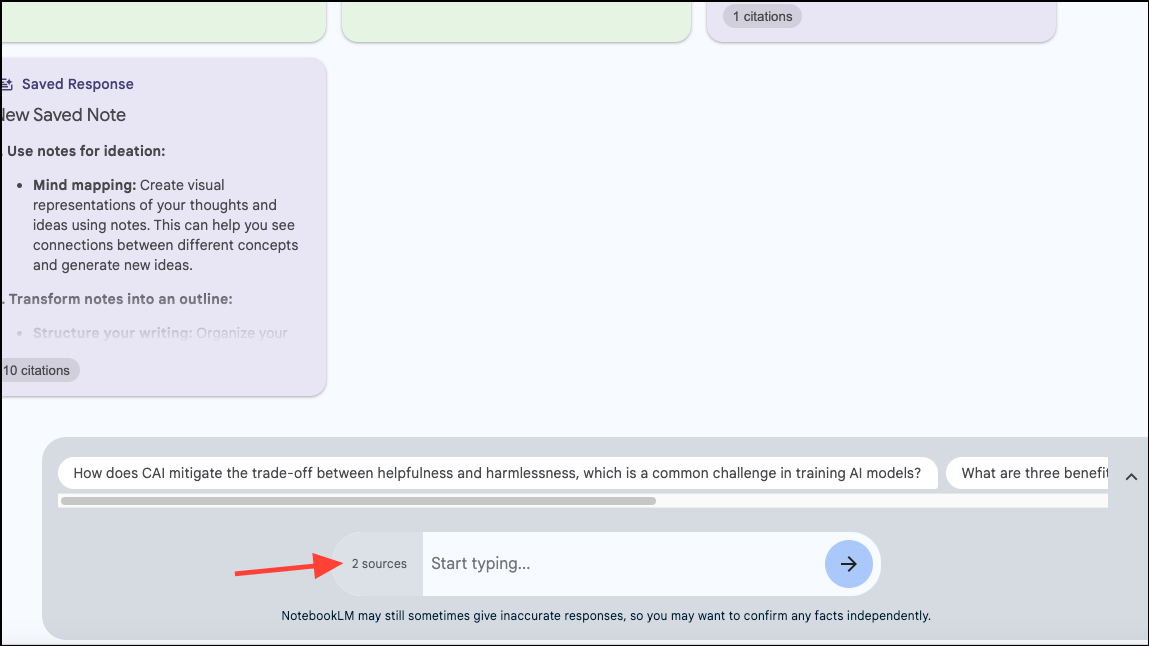
- In case you don't want to use a source permanently or you've run into a source limitation, you can also delete it. Click on the 'three-dot menu' icon from the source thumbnail and select 'Remove source'.

- Then, click 'Delete' from the confirmation dialog prompt.
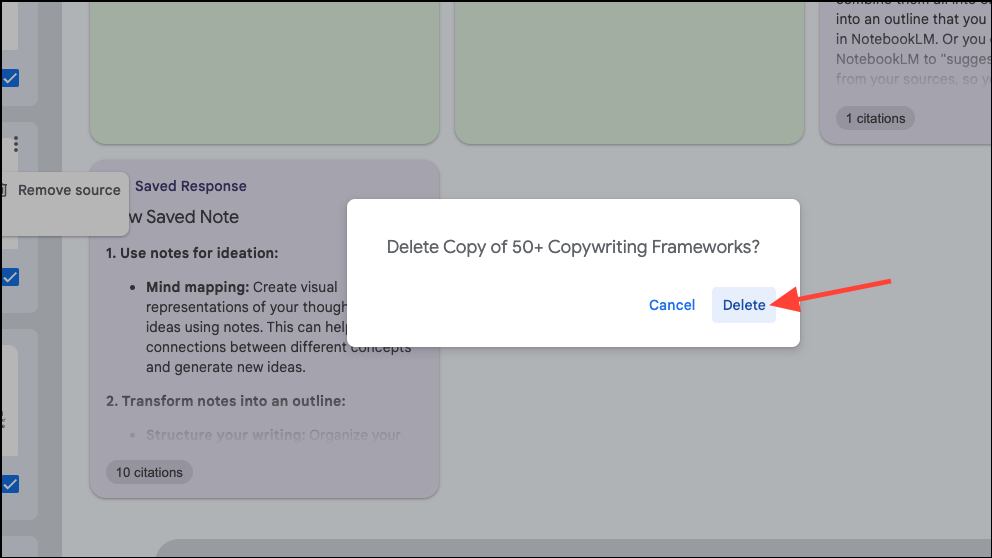
Sharing a Notebook
You can also share a notebook with other people as viewers or collaborators. If you're using a personal Gmail account or an EDU account, you can only share the notebook with at most 50 other individual users, and you cannot share them with Google Groups. Enterprise accounts can share a notebook with an unlimited number of individual users or Google groups.
1. To share a notebook, click on the 'Share' icon in the top-right corner of the screen.

- Then, enter the email addresses of the users you want to share the notebook with or select people from suggestions. You can only share a notebook with users in the same domain as yours, such as @gmail.com, @abc.edu, etc.
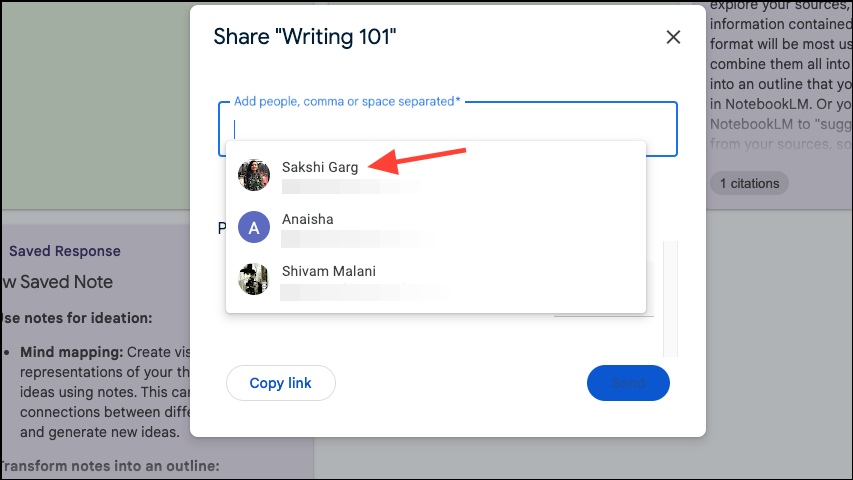
- You can select the permission (Viewer/ Editor) for each user from the drop-down next to their username.
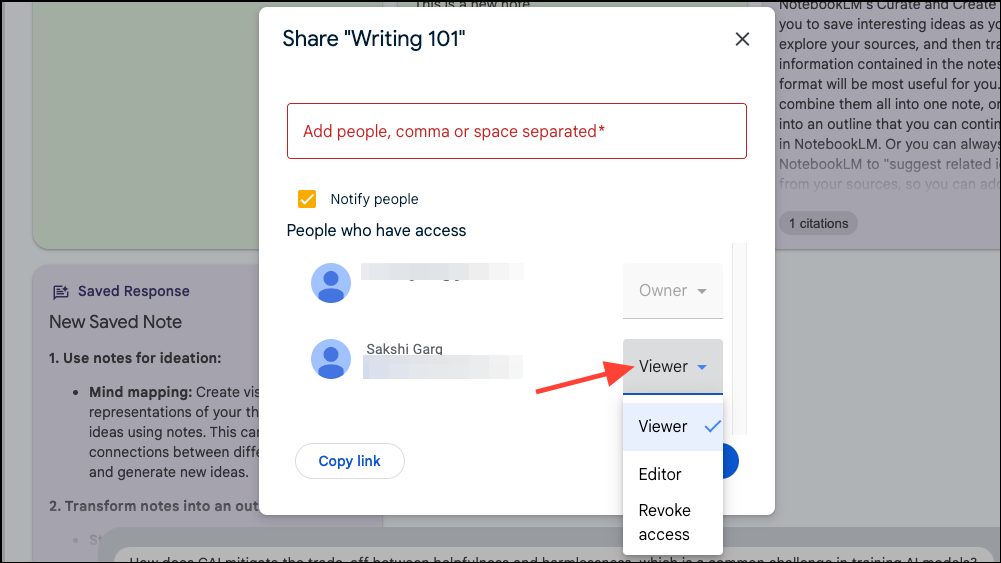
- Finally, click on 'Send'. People you've shared access with receive an email invitation which they'll need to accept to view the notebook.
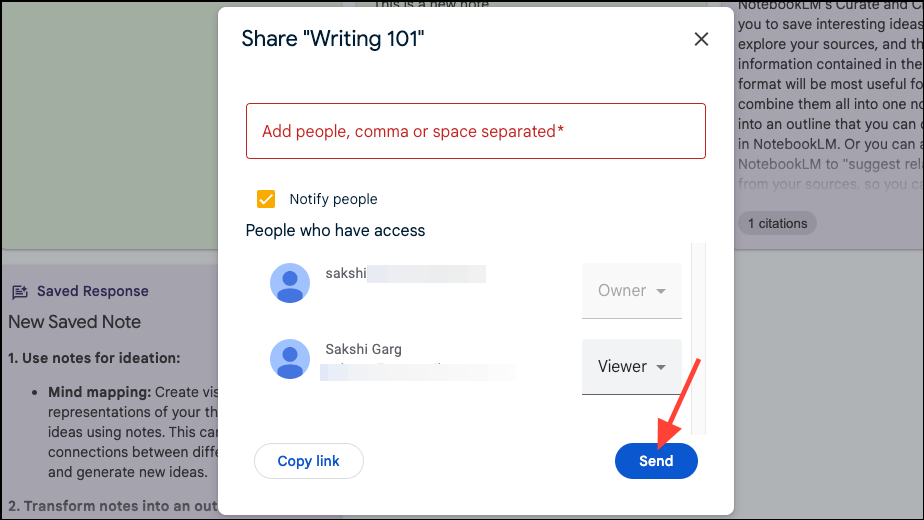
NotebookLM provides a novel way to utilize AI by grounding language models in a user's own notes and sources. This customized approach allows the tool to gain a deeper understanding of specific topics and generate more relevant responses. While NotebookLM is still in its early stages, it demonstrates the potential for AI to enhance research, learning, and creativity.

